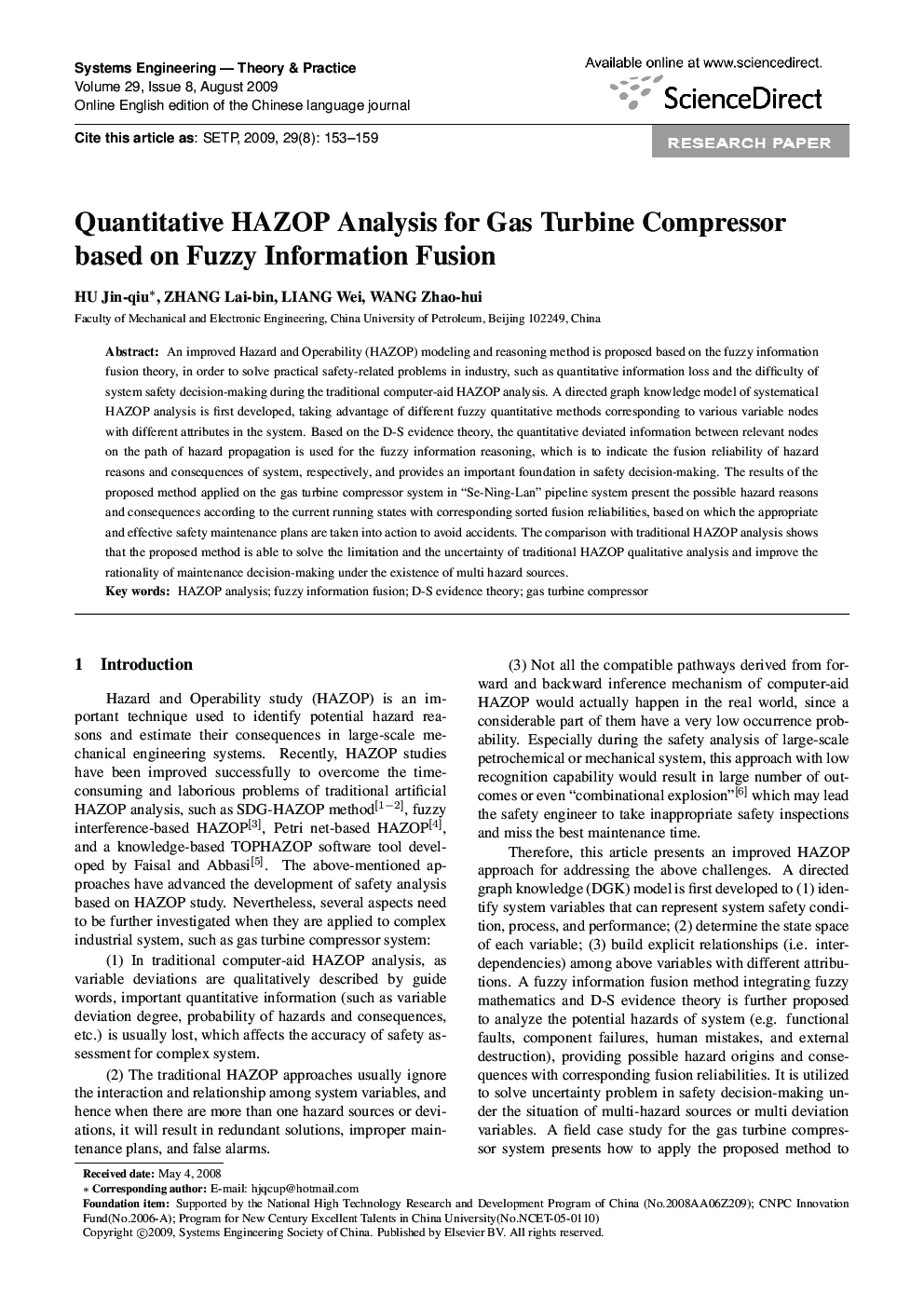| کد مقاله | کد نشریه | سال انتشار | مقاله انگلیسی | نسخه تمام متن |
|---|---|---|---|---|
| 1144256 | 957389 | 2009 | 7 صفحه PDF | دانلود رایگان |

An improved Hazard and Operability (HAZOP) modeling and reasoning method is proposed based on the fuzzy information fusion theory, in order to solve practical safety-related problems in industry, such as quantitative information loss and the difficulty of system safety decision-making during the traditional computer-aid HAZOP analysis. A directed graph knowledge model of systematical HAZOP analysis is first developed, taking advantage of different fuzzy quantitative methods corresponding to various variable nodes with different attributes in the system. Based on the D-S evidence theory, the quantitative deviated information between relevant nodes on the path of hazard propagation is used for the fuzzy information reasoning, which is to indicate the fusion reliability of hazard reasons and consequences of system, respectively, and provides an important foundation in safety decision-making. The results of the proposed method applied on the gas turbine compressor system in “Se-Ning-Lan” pipeline system present the possible hazard reasons and consequences according to the current running states with corresponding sorted fusion reliabilities, based on which the appropriate and effective safety maintenance plans are taken into action to avoid accidents. The comparison with traditional HAZOP analysis shows that the proposed method is able to solve the limitation and the uncertainty of traditional HAZOP qualitative analysis and improve the rationality of maintenance decision-making under the existence of multi hazard sources.
Journal: Systems Engineering - Theory & Practice - Volume 29, Issue 8, August 2009, Pages 153-159